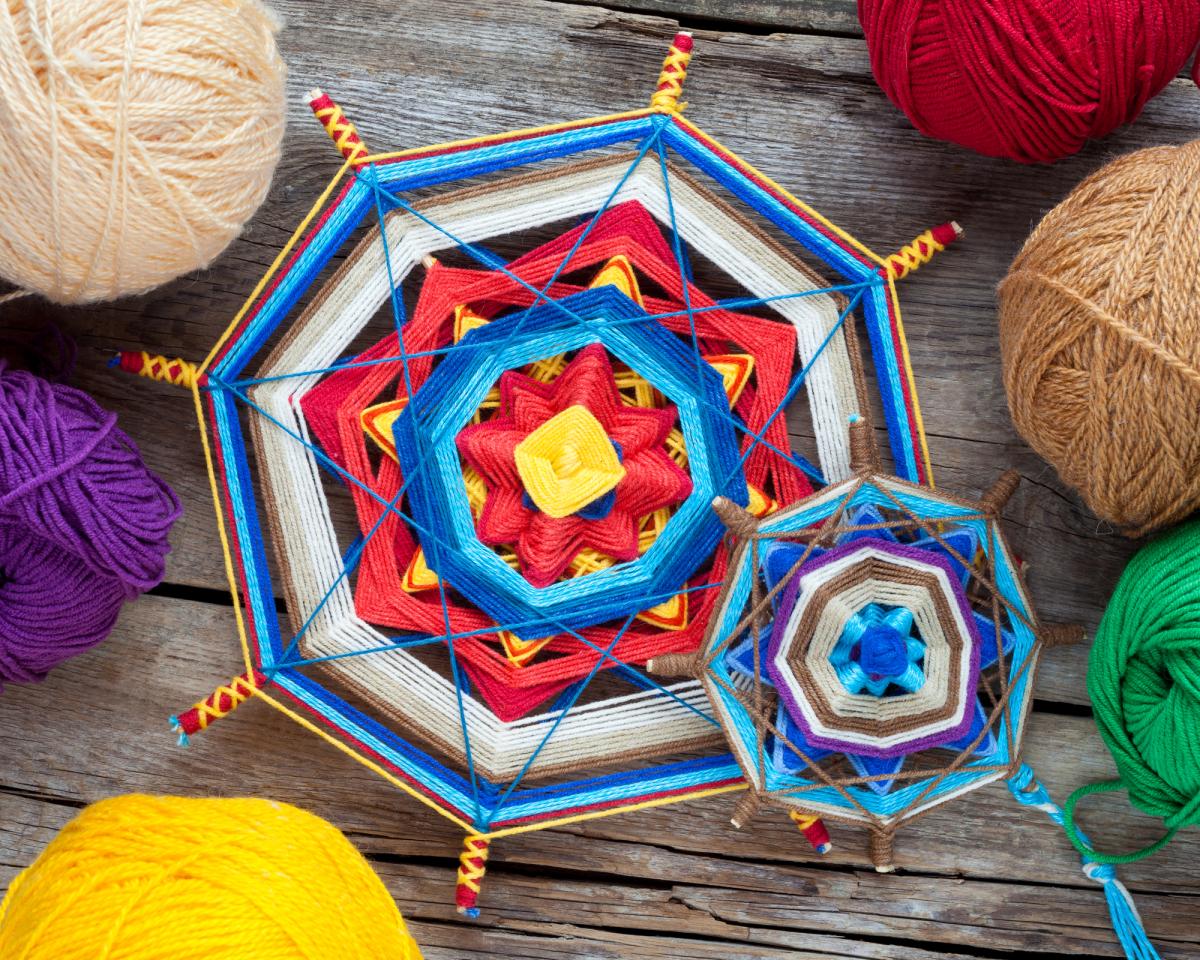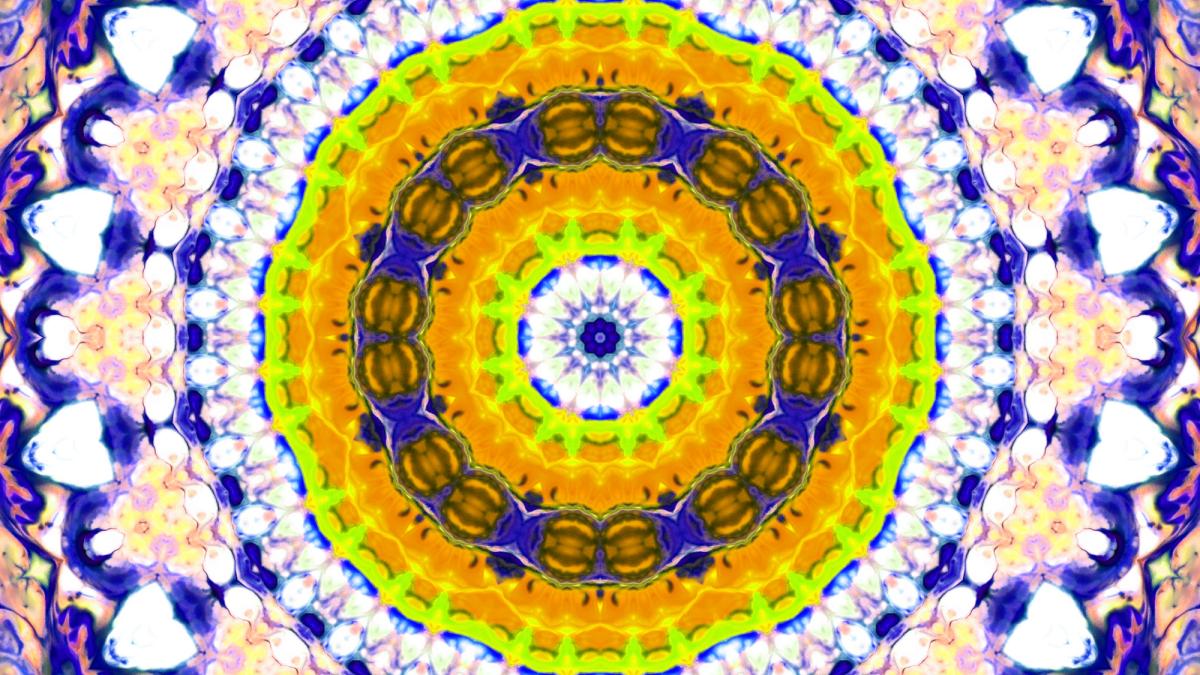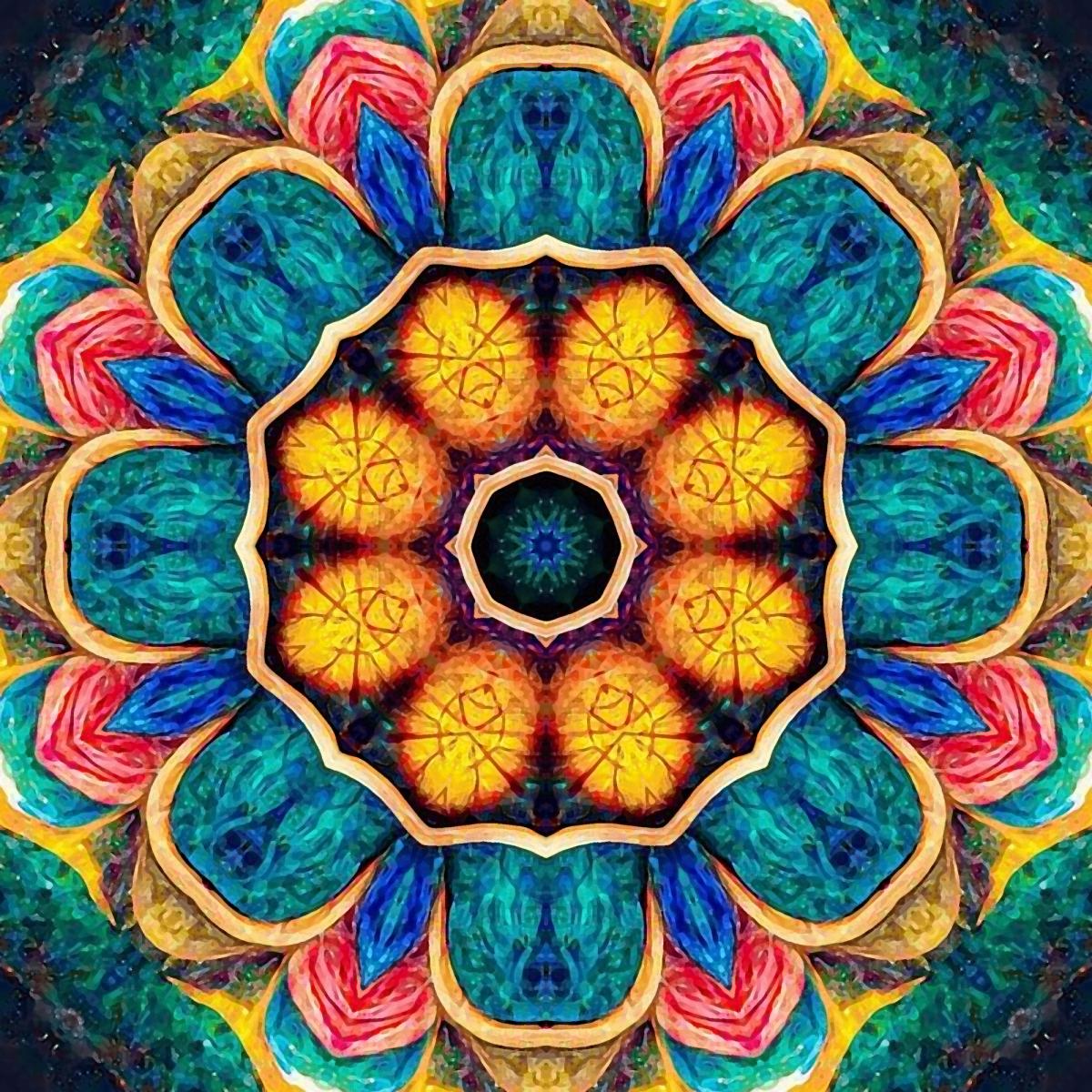To do Mandalas is an ancient practice that has been an integral part of diverse cultural and spiritual traditions around the world.
With its complex geometric representations, mandalas have been valued as therapeutic tools, providing a unique journey of expression and self-healing for many individuals.
In addition, handcrafted mandalas provide an opportunity for creativity and relaxation, allowing people to explore their imagination and artistic abilities in meaningful ways.
In this article, let's explore the fascinating universe of mandalas, from their origin and meaning to practical techniques for creating and using these beautiful works of art.
Throughout the text, let's delve deeper into the process of how to make mandalas, exploring different materials, painting and decorating techniques, and seeking creative inspirations to awaken the artistic expression of each individual.
Table of Contents
- What são Mandalas
- Benefíof Mandala Therapy
- Mandalas: How to Paint
- Step by step: How to Make Mandalas
- HéPainting and Decorating techniquesçãthe
- Exploring Different Styles of Mandalas
- Creative Uses of Mandalas
- Inspireçãthe: Mandalas Artístics and therapyêUticas
- Uncovering the Universe of Mandalas: Inspireçãthe, Creativity and Conexãthe spiritual
What Are Mandalas
Mandalas, with its harmonious and intricate symmetry, represent more than simple geometric shapes.
They are symbols loaded with spiritual and cultural meaning in various traditions around the world..
Originated in India thousands of years ago, mandalas are often associated with meditation, healing and self-knowledge.
These complex works of art are much more than just drawings; they represent the entirety of the universe and the connection between the microcosm and the macrocosm.
When exploring what mandalas are, we dive into a world of spirituality, creativity and deep meaning.
Benefits of Mandala Therapy
The benefits of mandala therapy are vast and impactful, providing a holistic approach to mental and emotional well-being.
When creating and working with mandalas, individuals can experience a significant reduction in stress and anxiety levels, finding a sense of calm and inner balance.
In addition, mandala therapy can help develop concentration and mindfulness, allowing people to connect more deeply with themselves and the present moment.
Another notable benefit is the ability of mandalas to serve as a form of self-expression and self-exploration., enabling practitioners to process complex emotions and find insights into their own inner journey.
This therapeutic practice can also promote creativity and self-confidence, encouraging individuals to express themselves freely and embrace their uniqueness.
By incorporating mandala therapy into your daily routines, people can experience a significant improvement in quality of life and overall well-being.
Mandalas: How to Paint
Coloring a mandala can be a therapeutic and creative experience.
When you sit down to paint a mandala, is entering into an active meditation process, where you can connect with yourself while focusing on colors and patterns.
To begin, choose colors that reflect your mood or the emotions you want to express.
Then, start coloring from the center of the mandala, working towards the edges.
There are no hard and fast rules about which colors to use or how to combine them.; follow your intuition and allow your creativity to guide the process.
Remember to breathe deeply while painting, letting each brushstroke be an expression of your true essence.
When you finish painting your mandala, Take a moment to appreciate your creation and the insights that may emerge during the process.
Step by step: How to Make Mandalas
Creating mandalas is a fascinating journey that combines creativity, spirituality and self-expression.
In this section, let's explore a detailed step-by-step guide on how to make mandalas in an engaging and meaningful way.
To begin, It is important to prepare the right materials.
Choose quality paper, pencils or drawing pens, compass and ruler.
These materials will ensure a solid foundation for your mandalas.
Then, define the size and shape of the mandala, drawing a central circle with the compass.
Divide the circle into equal sections using the ruler, thus creating the basic structure of the mandala.
This initial step is crucial to ensure the symmetry and harmony of the final mandala..
With the basic structure defined, It's time to let your creativity flow.
Start by adding patterns and decorative elements to the different sections of the mandala..
You can experiment with lines, geometric shapes, symbols and motifs inspired by nature.
Remember to follow your intuition and allow your imagination to guide the process..
There are no hard and fast rules when it comes to creating mandalas – let your mind and hand express themselves freely.
As your mandala comes to life, take time to observe and reflect on the meaning behind your design choices.
Each line, shape and color can have personal and symbolic meaning, reflecting aspects of your own inner journey.
Creating mandalas is not just an artistic activity, but also a form of meditation and self-knowledge.
When finishing your mandala, take a moment to appreciate your creation and the emotions it evokes.
Painting and Decoration Techniques
By exploring mandala painting and decorating techniques, There are a variety of creative approaches that can be explored to bring your creations to life.
A popular technique is the use of watercolor, which allows for a smooth blend of colors and a sense of fluidity in your mandala.
In addition, acrylic offers a vibrant and durable option, allowing layers of intense colors and interesting textures.
For those who prefer a more delicate approach, pointillism can be a fascinating choice, involving the application of small dots to create intricate, detailed patterns.
Beyond painting techniques, mandala decoration can be enriched with the use of decorative materials, like gems, glitter and relief paint, adding dimension and shine to your artwork.
By experimenting with different techniques and materials, you can discover a unique way to express your creativity and create truly stunning mandalas.
Exploring Different Styles of Mandalas
By exploring different styles of mandalas, we dive into a vast ocean of creativity and artistic expression.
Mandalas with stones offer a unique connection with nature, while pointillism adds a tactile and visually intriguing dimension to our creations.
Mandalas with mirrors expand our perception of symmetry and reflect the harmony of the universe, while mandalas with elements of nature connect us to the primordial roots of creation.
Each technique offers a unique opportunity to explore the complexity and beauty of mandalas, allowing us to express our individual vision whilst connecting with the vast spectrum of meanings and symbolism these sacred forms carry.
Mandalas with Stones
By exploring the fascinating world of stone mandalas, we are immersed in a journey of connection with nature and artistic expression.
The technique of creating mandalas with stones offers a unique opportunity to integrate earthly and spiritual elements, combining the solidity and texture of stones with the symmetry and patterns of mandalas.
When collecting stones of different sizes, shapes and colors, we are invited to contemplate the natural beauty around us and find inspiration in the very forms that the Earth offers us.
By arranging these stones in intricate and harmonious patterns, we can create mandalas that evoke a sense of balance and connection with the cosmos, conveying a message of serenity and integrity.
Experimenting with mandalas with stones is immersing yourself in a meditative creation process, where each stone is carefully placed to contribute to the totality and perfection of the final work.
Mandalas with Pointillism
Exploring mandalas with pointillism is immersing yourself in a world of details meticulously created through small dots..
Pointillism, an art technique that uses small marks or dots to form an image, offers a unique and fascinating approach to creating mandalas.
Each stitch is carefully placed to create complex patterns and immersive textures, resulting in mandalas that radiate a sense of depth and movement.
By adopting pointillism in mandalas, artists have the opportunity to explore the interplay between light and shadow, creating dynamic compositions that capture the viewer's attention.
This technique allows for detailed and expressive artistic expression, where each point contributes to the entirety of the mandala, creating a work of art that invites contemplation and reflection.
Mandalas with Mirror
Mirror mandalas offer a unique and fascinating approach to creating art.
When incorporating mirrors into mandalas, artists have the opportunity to explore symmetry and reflection, adding an extra dimension to your work.
Mirrors reflect patterns and shapes, creating a feeling of infinity and expansion, while also inviting the viewer to engage more deeply with the mandala.
This technique allows light and space to be manipulated in creative ways., resulting in mandalas that transcend their original form and invite contemplation and introspection.
Mandalas with Elements of Nature
Mandalas with elements of nature offer a unique way to incorporate natural beauty and energy into works of art.
When using elements such as leaves, flowers, shells and seeds, artists can create mandalas that capture the essence of flora and fauna.
These elements add texture, color and meaning of mandalas, connecting them to the earth and the cycle of life.
Mandalas with elements of nature invite contemplation and connection with the environment around us, conveying a feeling of serenity and harmony with the natural world.
Try these different styles of mandalas and find out which one resonates most with you.
Remember that the beauty of mandalas lies in the freedom of expression and unlimited creativity, so feel free to explore and try new techniques to create your own unique works of art.
Creative Uses of Mandalas
Exploring the creative uses of mandalas opens up a vast world of artistic and therapeutic possibilities.
In addition to being simply decorative works of art, Mandalas can be incorporated into a variety of creative and functional projects.
A popular idea is to integrate mandalas into decorative items. handicrafts, like custom t-shirts, notebook covers or even decorative paintings to add a unique and spiritual touch to the environment.
In addition, mandalas can serve as powerful tools in meditation and mindfulness practices, helping to focus the mind and cultivate a state of inner tranquility.
Another creative way to use mandalas is to incorporate them into personal rituals., such as in the creation of a sacred altar or in ceremonies of healing and renewal.
Whatever the chosen use, mandalas offer a unique opportunity for personal expression, spiritual connection and emotional growth.
Inspiration: Artistic and Therapeutic Mandalas
Exploring the inspiration behind artistic and therapeutic mandalas is to delve into a universe of creativity and deep meaning.
When looking at examples of handmade mandalas by different artists, we are transported to a world of beauty and individual expression.
Each mandala is unique in its shape and meaning, reflecting the creator's experiences and emotions.
These works of art not only captivate the eye, but they also touch the soul, inspiring us to explore our own creativity and spiritual connection.
When browsing a mandala gallery, we can find success stories of individuals who found healing, self-expression and renewal through the artistic and therapeutic practice of mandalas.
These inspiring works of art don't just adorn our lives, but they also remind us of the beauty and depth that resides within ourselves.
Uncovering the Universe of Mandalas: Inspiration, Creativity and Spiritual Connection
In short, mandalas represent much more than simple drawings; they are profound expressions of creativity, spirituality and self-expression.
Throughout this article, we explore different aspects of mandalas, from its history and meaning to practical creation techniques and inspiration.
We discover how mandalas can be used for therapy, crafts and even meditation, offering a variety of benefits for physical well-being, mental and emotional.
By incorporating mandalas into our lives, we open the doors to self-exploration, inner healing and connection with the divine.
Therefore, May this article serve as a source of inspiration and knowledge, encouraging you to explore the fascinating world of mandalas and all the creative possibilities they offer.
May you feel inspired to begin your own journey of creation and discovery, finding meaning and beauty in every stroke and pattern.



